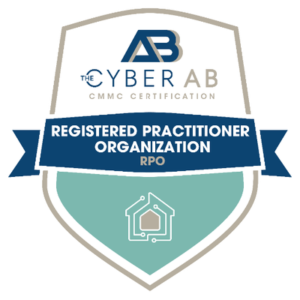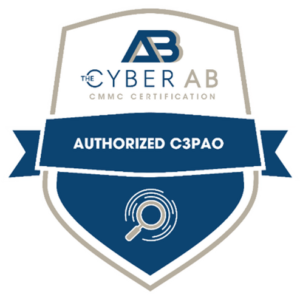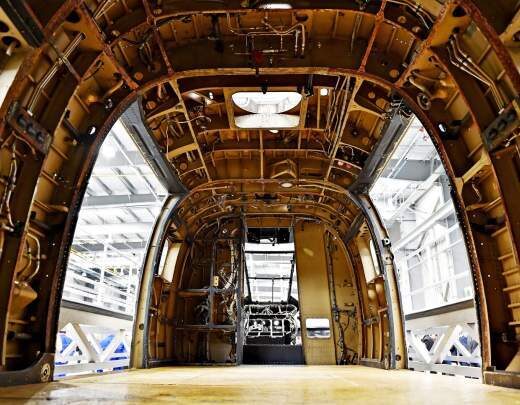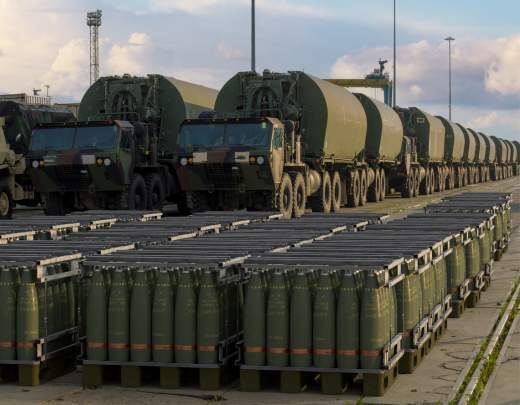In the defense aerospace sector, cybersecurity is mission-critical. From aircraft subsystems to satellite components and avionics software, the systems you build today directly support U.S. national security. That’s why CMMC Level 2 compliance is fast becoming non-negotiable for companies operating in this space.
Aerospace projects often span multiple business units, subcontractors, and geographic regions. CUI may be shared across engineering teams, design partners, and specialized fabricators. Without a clear boundary and strict control of access, the risk of data sprawl and unintentional exposure increases dramatically.
Many aerospace firms are in transition—modernizing parts of their environment while still relying on legacy, on-premise systems tied to custom software or defense-specific infrastructure. Navigating CMMC compliance across hybrid IT environments introduces configuration complexity and control implementation challenges.
Aerospace contractors are already managing ITAR, DFARS 7012, NIST 800-53, and possibly AS9100 standards. While overlapping, CMMC adds new demands around evidence gathering, documentation rigor, and maturity of implementation that often require crosswalking multiple frameworks to avoid duplication or conflict.
Aerospace excels at engineering precision, but cybersecurity often isn’t embedded. Retrofitting controls is challenging, and documenting access, incident response, and log review consistently across teams is difficult when CMMC compliance isn’t part of the workflow.


In aerospace, CUI can flow across internal silos, supplier networks, and classified/unclassified environments. Mapping these pathways is critical to defining your CMMC assessment boundary. Consider whether you can deploy enclave strategies or data segmentation to limit the systems in scope while maintaining operational continuity. If that is possible, it will reduce your footprint and thus your attack surface and more than likely your cost of compliance.

A structured CMMC gap analysis should start with helping you inventory where CUI exists—across design files, simulation models, shared CAD environments, or project collaboration platforms, identify assets that are in and out of scope —and not until those tasks are completed should you begin to assess your current alignment with required CMMC controls and objectives. It’s an essential first step to understand exposure and prioritize actions.

You don’t need to rewrite your entire engineering playbook—but you do need to embed cybersecurity into the way you design, build, and share data. That means role-based access controls, secure coding practices, vendor management, and system monitoring must be backed by enforceable policies and documented procedures. Reviewing and harmonizing your policies and procedures will help reduce the compliance efforts.

Once you're confident in your program, a CMMC mock assessment offers a controlled way to validate that policies, processes, and evidence hold up under real-world scrutiny and will give your team low risk opportunities to practice conversing with assessors and understanding the sorts of questions they will ask and what is really important to meeting all the requirements. In complex, high-value sectors like aerospace, this step can significantly reduce risk and avoid costly delays.

“Working with Coalfire Federal for our CMMC Level 2 assessment was a thorough and professional experience from start to finish. Their assessment team demonstrated deep expertise in both the technical requirements and the practical implementation of CMMC controls."
Please note that this FAQ is a summary and should be used in conjunction with the official CMMC documentation for precise guidance and compliance instructions.
The Cybersecurity Maturity Model Certification (CMMC) 2.0 requires any organization handling Controlled Unclassified Information (CUI) to meet all 110 practices and 320 control objectives in NIST SP 800-171. This applies not only to prime contractors but also to specialized suppliers and technology partners.
Whether you're building flight control systems, integrating defense-grade GPS, or developing components for UAVs, CUI is embedded in nearly every phase of your operation. Without CMMC Level 2 certification, you may soon be ineligible for new DoD contracts or at risk of being replaced by compliant competitors.
The stakes are high—and so is the scrutiny. Aerospace programs often involve International Traffic in Arms Regulations (ITAR), proprietary technologies, and long development timelines. Demonstrating a mature cybersecurity posture isn't just a compliance issue—it's about proving your organization can be trusted to protect sensitive national defense data.
In a sector defined by high-value contracts, long timelines, and fierce competition, being CMMC-compliant isn’t just about passing an assessment—it’s about being selected for the next phase of the mission. Defense primes are already prioritizing suppliers who are ready. The further behind you fall, the more difficult it becomes to stay in the game.
Aerospace contractors who start early and integrate compliance into their broader business strategy will not only reduce assessment risk—they’ll build stronger relationships with program officers and increase their competitive standing in future bids.
Both prime contractors and specialized suppliers or technology partners handling CUI must achieve CMMC Level 2 to remain eligible for DoD contracts.
Non-compliance can make companies ineligible for new DoD contracts or at risk of being replaced by competitors who are certified.
No. True CMMC compliance requires strategic alignment across engineering, security, and leadership, demonstrating a mature cybersecurity posture. That's where Coalfire Federal can help.
CMMC Level 2 proves your trustworthiness in defense aerospace—use a gap analysis or mock assessment to find blind spots and prepare with confidence.